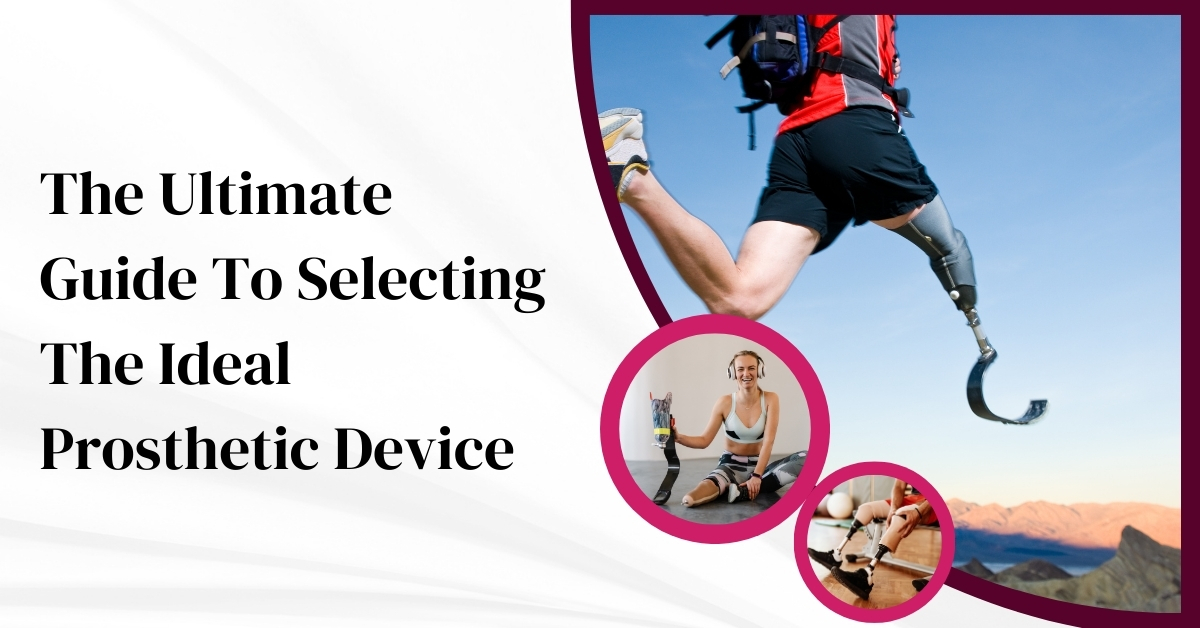
Prosthetic advancements have transformed the way individuals navigate life with limb loss or congenital differences. These innovative devices are crafted to boost mobility, restore function, and enhance the quality of life for those requiring them. This comprehensive manual delves into the realm of prosthetic devices, elucidating their varieties, the acquisition process, and maintenance counsel. Whether contemplating a prosthetic device for oneself or a dear one, familiarity with these elements can profoundly influence decision-making.
Understanding Prosthetic Devices
as artificial limbs or body parts fashioned to substitute a lost or compromised body part. Tailored to meet individual requisites, they play a pivotal role in rehabilitation and recovery efforts. Modern prosthetics not only reinstate fundamental functionality but also elevate life quality by facilitating daily activities with greater ease.
The realm of prosthetic technology has witnessed remarkable evolution, progressing from rudimentary wooden or metal limbs to cutting-edge bionic and myoelectric prosthetics. Crafted with precision, contemporary prosthetics employ advanced materials and technologies to emulate natural movement and provide superior comfort.
Exploring The Diverse Types Of Prosthetics
Prosthetic devices encompass various types, each tailored to address specific needs and preferences. Here’s a brief overview:
1. Upper Limb Prosthetics
Upper limb prosthetics are designed to replace arms or hands lost due to injury or congenital conditions. They can be categorized into:
- Cosmetic Prosthetics: Primarily for aesthetics, offering a natural appearance without extensive functionality.
- Functional Prosthetics: Emphasizing functionality, comprising mechanical and myoelectric options for manual or muscle-signal-controlled movement.
- Bionic Prosthetics: Advanced prosthetics integrating sensors and motors for a natural range of motion with precise control systems.
Lower Limb Prosthetics
Lower limb prosthetics are designed to replace legs or feet. They include:
- Below-Knee Prosthetics: Supporting mobility post-below-knee amputation with a socket, pylon, and foot.
- Above-Knee Prosthetics: Complex prosthetics for above-knee amputations, accommodating knee and hip joint functionality.
- Foot Prosthetics: Diverse foot designs for specific activities like running, with features such as shock absorption springs.
3. Adaptive Prosthetics
Adaptive prosthetics are designed for individuals with unique needs or those who require specialized functions. Examples include:
- Sports Prosthetics: Tailored for sports activities, emphasizing durability and performance.
- Pediatric Prosthetics: Catering to children’s needs, considering growth and facilitating adjustments as they grow.
Navigating The Prosthetic Acquisition Process
Acquiring a prosthetic device involves multiple essential steps to ensure an accurate fit and optimal functionality. The process typically includes:
1. Consultation and Assessment: Initial evaluation by a prosthetist or orthopedic specialist to determine needs and functional requirements.
2. Customization and Fitting: Custom design and fabrication of the prosthetic, involving precise molding or scanning of the residual limb for a comfortable fit.
3. Training and Rehabilitation: Essential training on prosthetic usage and physical therapy to strengthen muscles and adapt to the device.
Prosthetic Maintenance Tips For Prolonged Functionality
Proper maintenance is vital for the longevity and performance of prosthetic devices. Key tips include:
1. Regular Cleaning: Maintain hygiene and comfort by cleaning the prosthetic as per manufacturer instructions.
2. Inspect for Wear: Routinely check for signs of wear and tear to address issues promptly.
3. Proper Storage: Store the prosthetic in a cool, dry place away from extreme temperatures.
4. Follow Guidelines: Adhere to manufacturer guidelines for cleaning, part replacements, and care instructions.
5. Regular Check-Ups: Schedule periodic check-ups with a prosthetist for adjustments and maintenance.
In Conclusion
Prosthetic devices play a pivotal role in enhancing functionality and enriching the lives of individuals with limb loss or impairment. Appreciating the diverse prosthetic types, the acquisition process, and maintenance essentials is crucial for effective decision-making and optimal utilization. Partnering with a reputable prosthetics manufacturing company in India ensures access to cutting-edge solutions tailored to individual needs, fostering improved well-being and daily life satisfaction.
By staying attuned to prosthetic innovations and proactive in care, individuals can embrace the transformative potential of modern technology, leading fulfilling and active lives.














